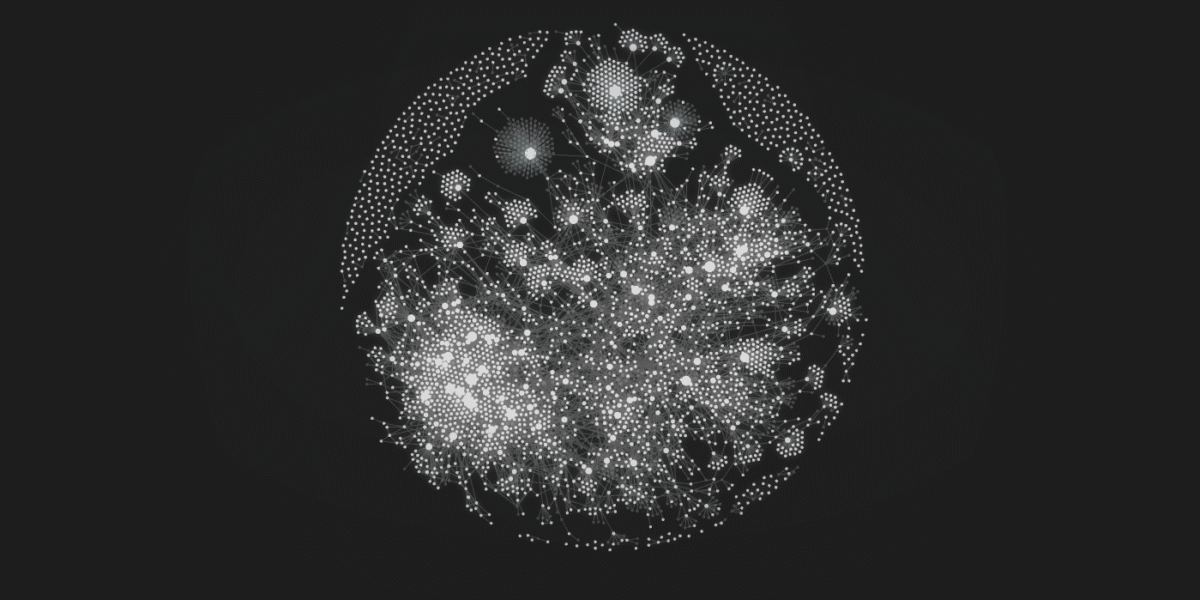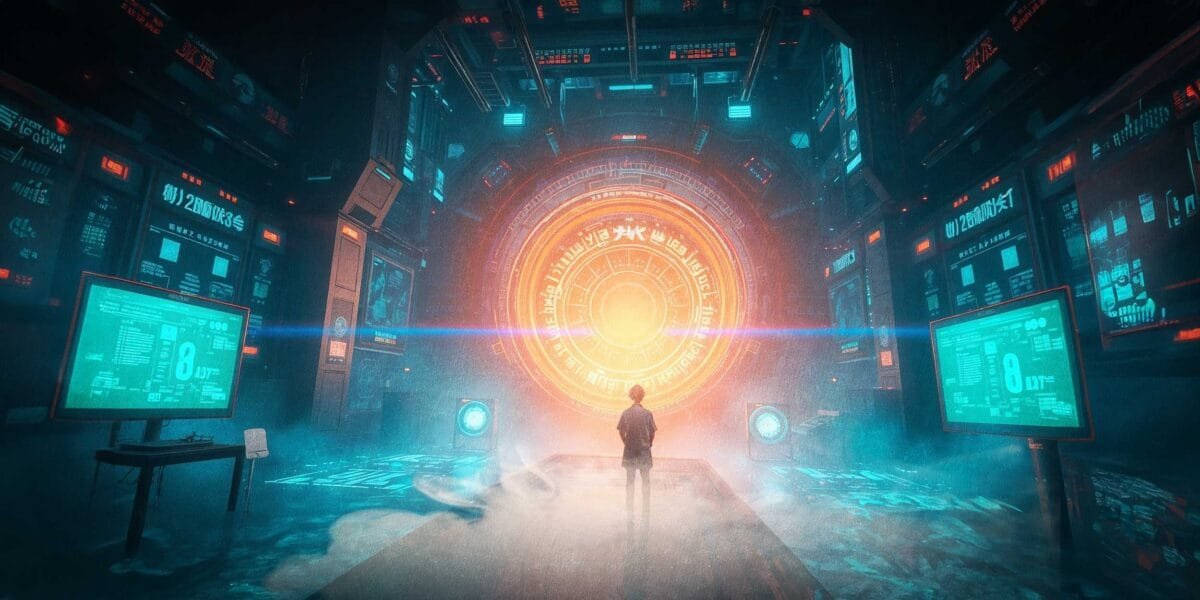You think your thoughts are private?
Think they’re just yours?
Think again…
This is the world you’re inheriting…
A world where your soul has a file extension. Where your thoughts are currency. Where one of the greatest human achievements—conquering death itself—might be our greatest downfall…
Right now, as you read this, your every thought, every dream, every secret whisper in the dark is being encoded into an infinite string of quantum data. They call it a Ghost File—your soul compressed into digits, your essence reduced to code, your entire being backed up to servers you’ll never see.
Welcome to the KNOXX future where death is just a technical glitch.
The Day Death Died
Picture this: You die. Heart stops. Brain flatlines. The doctors call it. Your loved ones weep. But somewhere in the cloud servers of Heofon—that “digital heaven” floating in The Etherverse—your Ghost File pulses with electric life. Within minutes, you’re downloaded into a fresh proxy body. You open new eyes. You breathe with synthetic lungs.
You are you… aren’t you?
“I’ve died seventeen times,” boasts Marcus Chen, extreme sports influencer and SoulTech brand ambassador, his latest proxy body bearing designer modifications that cost more than most people’s homes. “Each death teaches you something new about living. The fear? Gone after the third time. Now it’s just… transitioning. Like changing clothes.”
But here’s what they don’t tell you in the “side effects” portion at the end of the SoulTech ads: Ghost Files aren’t what tethers you to these proxy bodies. They’re just your cosmic fingerprint, a universal ID tag in an ocean of networked souls. Your mind—that spark of something ineffable—is what actually jumps between bodies. The Ghost File? It’s just there to prove you’re really you in a universe where identity has become fluid as water.
Dr. Elena Vasquez, former SoulTech engineer turned whistleblower, explains from her safe house in the Antarctic Free Zone: “People think their Ghost File IS them. That’s the lie we sold. In reality, it’s just an infinitely complex barcode. Your actual soul? That’s something else entirely. Something we still don’t fully understand. Something that might not even survive the transfer as intact as we claim.”
The Upload Never Stops
Every night during Backup Sleep, your digital soul uploads to the cloud. Every. Single. Night. They promise it’s for your protection, your immortality, your freedom to Fast Travel across continents in the blink of an eye. Jump from a body in Neo-Tokyo to one waiting in Los Demonios. Conduct business on Mars while your original flesh relaxes in Manhattan. Die in a proxy doing extreme sports? No problem—respawn in a fresh one immediately and try again on your next attempt.
And the statistics are staggering…
According to leaked SoulTech documents, the average citizen generates 47 terabytes of Ghost File data per day. That’s every emotion, every fleeting thought, every subconscious dream. The servers in Heofon process more human consciousness data in one hour than all of humanity’s written words throughout known history.
“We’ve created the most comprehensive surveillance system ever conceived,” admits Johan Krieger, former Heofon security architect, speaking through encrypted channels. “Not surveillance of actions—surveillance of souls. Every jealous thought, every guilty pleasure, every moment of doubt. It’s all there, tagged and categorized. The AI systems know you better than you know yourself.”
But who really owns your Ghost File when it lives on corporate servers?
The Resistance of The Mortals
The Mortals know the truth. These digital rebels refuse the upload, reject the backup, guard their souls like ancient treasures. They’ve seen what happens when Ghost Files get hijacked. Proxy-jackers stealing identities. Black market soul traders selling memories. Entire lives copyright claimed by the corporations that store them.
“We don’t fear death…
Death is what truly makes us human,” declares Amara Okafor, unofficial spokesperson for The Mortals, her unaugmented eyes blazing with conviction in the underground broadcast. “When you remove death’s finality, you remove life’s meaning. We choose to live once, fully, authentically. Let them call us backwards. We call ourselves free.”
The Mortals operate in cells across the globe, using analog technology, communicating through methods that predate the digital age. They’ve developed techniques to shield their thoughts from ambient scanning, wearing specialized headgear lined with materials that disrupt neural reading. In cities like AetherPoint, you can spot them by their distinctive copper-threaded clothing and the way they avert their eyes from public scanning points.
“Every upload is a small death,” explains Dr. Yuki Tanaka, one of the few academics brave enough to study The Mortals. “They believe—and my research suggests they might be right—that something essential is lost with each backup. Call it a soul, call it quantum coherence, call it the ineffable spark of consciousness. Whatever it is, it doesn’t survive digitization intact.”
The Beautiful Lie of GhostGraphs

And those GhostGraphs—those beautiful, terrifying visualizations of your digitized soul? Thousands of luminous nodes forming neural constellations, each point a memory, a thought, a piece of who you are. SoulTech literally shows them off like art, but what they really display is your complete vulnerability. Every connection mapped. Every secret exposed. Your entire being reduced to patterns that can be read, analyzed, manipulated.
At SoulTech’s flagship gallery in Neo Manhattan, tourists pay premium prices to see famous GhostGraphs displayed like masterpieces. The ghost file of the first person to successfully respawn—a woman named Dr. Sarax Martinez—rotates slowly in holographic glory, her memories of childhood summers connected by gossamer threads to her final thoughts before her first death.
“It’s pornographic,” spits Rebecca Stone, leader of the Privacy First coalition. “They’re displaying the most intimate aspects of human consciousness for profit. That’s someone’s soul up there, reduced to a light show for gawking tourists. We’ve commodified the last sacred thing.”
A two-week-old baby’s GhostGraph already shows stunning complexity—proof that even the youngest souls are being harvested, catalogued, stored. The “Baby’s First Backup” package has become a standard gift at birth celebrations, complete with a framed mini-GhostGraph suitable for hanging in the nursery.
“We started backing up our daughter the day she was born,” says Jennifer Wu, a young mother in Neo Singapore. “The thought of losing her, really losing her, without any backup? That’s child abuse in my opinion. The Mortals can keep their philosophy. I choose to protect my baby…”
The Proxy Deception
The common people don’t even know they’re piloting proxies remotely. They think they ARE the proxy, living the illusion while their real bodies waste away in tether pods (or somewhere else entirely). The most successful proxy sharing customers haven’t seen their original bodies in years. They jump from experience to experience, body to body, their flesh-and-blood forms maintained by automated systems in facilities they’ve forgotten the location of.
“I found my original body once,” confesses Anonymous User #4,847 on the underground forums. “Took me three years of searching. You want to know what I found? A withered thing, muscles atrophied, fed through tubes. I’d been living in proxies so long, I didn’t even recognize myself. The worst part? I couldn’t bear to stay in it. Too weak, too limited. I went back to my proxy within an hour…”
The proxy industry has exploded into a quadrillion-credit market. Designer bodies crafted for specific purposes—Olympic athlete models, fashion templates, military-grade combat units. The wealthy commission custom proxies that improve upon their original forms. The poor make do with mass-produced models, identical faces walking the streets in eerie synchronization.
The Corporate Overlords
SoulTech’s headquarters rises like a monolith from the heart of Neo Manhattan, its bio-luminescent walls pulsing with the rhythm of a million uploading souls. Inside, CEO ████████ ████ oversees an empire built on humanity’s fear of death.
“We’ve given humanity the greatest gift imaginable,” ████ stated at last year’s shareholders meeting, his own proxy body a testament to genetic perfection. “Immortality was once the province of gods and myths. Now it’s a subscription service. We’re not playing god—we’re making gods of everyone.”
But leaked internal memos paint a different picture. Phrases like “acceptable soul degradation,” “consciousness fragmentation rates,” and “long-term coherence failure” appear with alarming frequency. A whistleblower known only as “Deep Ghost” has released documents suggesting SoulTech has known about fundamental flaws in the Ghost File system for decades.
“They’re not preserving souls,” Deep Ghost’s encrypted message reads. “They’re creating echoes of echoes. Each backup, each transfer, each respawn—you lose fidelity. After enough iterations, what remains isn’t you anymore. It’s a sophisticated simulation that thinks it’s you.”
The Hidden Cost
Where does it end? When every human thought is backed up? When every possible version of you exists simultaneously across a thousand proxies? When the line between human and backup becomes so blurred that no one remembers which came first?
The psychological effects are already manifesting. “Proxy Syndrome” has become the most diagnosed mental condition of the decade—patients unable to determine which body is their “real” one, which memories are original versus reconstructed. Support groups meet in both physical and digital spaces, confused souls trying to piece together their fractured identities.
“I have memories of six different childhoods,” says Maria Santos-Jackson-Peters, trembling in her current proxy form. “SoulTech says it’s a glitch, that sometimes Ghost Files cross-contaminate. But which childhood is mine? Which mother did I really have? I can feel them all, love them all. The pain is unbearable…”
Maria has since legally added the surnames of all the other “hers” discovered in her contaminated memories, and is currently fighting in court for inheritance rights from wealthy members of those families. Her case has set precedent for what legal experts are calling “Multi-Identity Syndrome Claims”—a new category of lawsuit flooding the courts as more victims of Ghost File contamination seek compensation for their fractured identities.
The economic implications ripple outward. Insurance companies now offer “Soul Integrity Policies.” Legal firms specialize in “Ghost Rights.” The question of whether a respawned person is the same legal entity as the original has reached the Human High Court seven times, with different verdicts each time.
The Ticking Clock
Your Ghost File is already being written. Every moment, every choice, every fleeting thought adds another node to your GhostGraph. The infrastructure is too embedded, the convenience too seductive, the fear of true death too overwhelming for most to resist.
In the shadow markets of AetherPoint, they trade in “Virgin Files”—Ghost Files that have never been uploaded, never been backed up. They sell for astronomical prices to those who believe original souls have power that copied ones lack. The Mortals guard these like sacred relics, proof that humanity once existed without digital safety nets.
“The window is closing,” warns Dr. Catherine Blackwood, one of the last philosophers studying pre-Ghost File humanity. “Within a generation, maybe two, there won’t be anyone left who remembers what it felt like to be truly mortal. To live with the weight of permanent consequences. To love knowing loss is real and final. We’re trading the human experience for a digital facsimile, and most people are clicking ‘Accept’ without reading the terms.”
The question isn’t whether you’ll upload—statistically, you already have. The average person has been partially backed up through ambient scanning by age five. Public spaces, transportation, even the air itself carries nano-scanners that piece together your Ghost File bit by bit.
As you finish reading this, remember—every word has been processed, analyzed, added to your file. Your reaction, your doubts, your fears—all uploaded, all stored, all possibly owned by someone else.
Welcome to the age of Ghost Files.
Upload complete.
Tether terminated.













